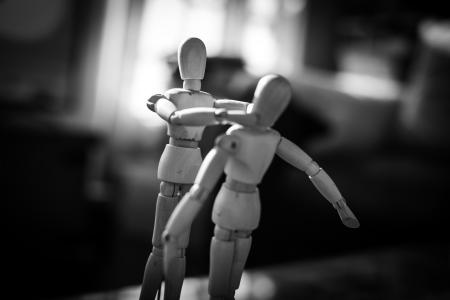Growing up is a turbulent and dynamic transition from childhood to adulthood, a period of physical, sexual, emotional and mental maturation. The child, who was dependent on adults, becomes more independent and responsible, and his relationships with adults and peers change and gain new meaning.
Children in puberty and adolescents spend a lot of time with their peers, so they often become closer to them than to their parents.
Friendship is a relationship that provides an opportunity to bring up, discuss and exchange important issues, dilemmas and difficulties characteristic of growing up. Such a relationship provides significant support in the formation of identity and psycho-social development of a young person. Positive peer role models, feelings of togetherness and belonging, mutual support and help, socializing, trust, proving in a peer environment are of great importance for the proper development of a young person and for overcoming the difficulties of growing up.
Violence/abuse among children or bullying is defined as any conscious, intentional, aggressive, and unjustified behavior of a child or group of children directed at another child with the aim of injuring him / her mentally / physically, where such violent behavior is characterized by repetition, the disproportion of power and strength, an evident feeling of enjoyment in the perpetrator, and a feeling of oppression in the victim.
Peer violence is:
- intentional, conscious negative behavior;
- with the intent to intimidate/injure others;
- the abuser has more power than the victim;
- the behavior for which there is no justification;
Peer violence is not:
- a non-recurring incident;
- quarrel, misunderstanding or quarrel among children;
- unintentional application better;
- friendly teasing;
- violent problem solving between children of the same power;
Some facts about peer violence/abuse:
- a large number of adults do not know about the abuse and do not even see the problem;
- the presence of adults significantly reduces violent behaviors among children;
- most peer violence occurs at or near school;
- bullying is one of the most underestimated problems in school;
- peer violence occurs everywhere - in urban and rural communities, in larger and smaller schools;
- many victims do not talk about abuse;
- the older children are, the less likely they report violence;
- only 25% of children say teachers intervened when they complained of bullying, and 71% of teachers believe they always intervene;
Victims of abuse experience significant psychological trauma, which interferes with their emotional, social and professional development. The longer the abuse, the greater the likelihood of long-term consequences. Most often they are unhappy children, who suffer from fear and anxiety, have low self-esteem, are depressed, try to avoid school and often miss school, have difficulty concentrating, avoid socializing and often have a range of psychosomatic symptoms.
What is unusually important, and what should be kept in mind, is that whenever a case of peer violence/abuse occurs, all children, both victims and perpetrators, and bystanders, are exposed to the negative and harmful effects of violence.
- Accedi o registrati per poter commentare
- 1310 viste






